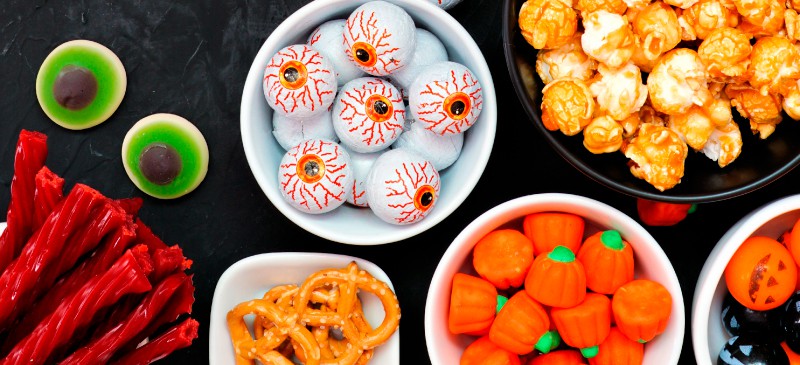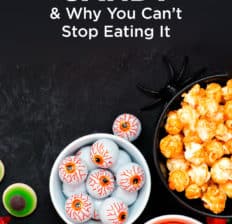This Dr. Axe content is medically reviewed or fact checked to ensure factually accurate information.
With strict editorial sourcing guidelines, we only link to academic research institutions, reputable media sites and, when research is available, medically peer-reviewed studies. Note that the numbers in parentheses (1, 2, etc.) are clickable links to these studies.
The information in our articles is NOT intended to replace a one-on-one relationship with a qualified health care professional and is not intended as medical advice.
This article is based on scientific evidence, written by experts and fact checked by our trained editorial staff. Note that the numbers in parentheses (1, 2, etc.) are clickable links to medically peer-reviewed studies.
Our team includes licensed nutritionists and dietitians, certified health education specialists, as well as certified strength and conditioning specialists, personal trainers and corrective exercise specialists. Our team aims to be not only thorough with its research, but also objective and unbiased.
The information in our articles is NOT intended to replace a one-on-one relationship with a qualified health care professional and is not intended as medical advice.
Worst Halloween Candy & Why You Can’t Stop Eating It
October 24, 2024

Apart from the costumes, haunted houses, scary movies and spooky decorations, there’s no doubt that Halloween candy is a key component of the festivities this time of year, but you want to avoid overdoing it on the worst Halloween candy out there.
Whether you’re watching your waistline, cutting back on sugar consumption or simply trying to be more mindful about your health, it’s easy to get off track during the holiday season. Between the chocolate bars, gummy bears, taffy and lollipops, it can be incredibly easy to go overboard chowing down on your trick-or-treat treasures.
Fortunately, knowing which candies to eat and avoid can make it much easier to practice moderation while still indulging in your favorite treats. Check out this guide for the worst Halloween candy, ranked, plus some healthy alternatives you can enjoy instead.
Why you can’t stop eating Halloween candy
If you find yourself elbows-deep in a plastic pumpkin full of candy each year around Halloween, you’re not alone. Around the country, many start shelling out big bucks to buy their favorite Halloween candy in bulk right as soon as spooky season rolls around.
According to the National Retail Federation, Americans are estimated to spend around billions on candy annually. For 2024, it’s expected Americans will spend roughly $3.5 billion on candy alone and $11.6 billion overall on Halloween, which equates to an average of $104 per person.
Not only that, but the average Halloween candy haul reportedly contains up to 7,000 calories, which is the equivalent of approximately 28 hamburgers, 25 slices of pizza or 36 chocolate donuts.
So why do many of us find it so difficult to scale back on the Halloween treats? For starters, almost all classic Halloween candies are jam-packed with added sugar, making them some of the post prominent hidden sugar foods.
It’s no secret that sugar can be highly addictive. It activates the reward centers in the brain, which causes increased cravings and makes it much harder to cut out your favorite candy cold turkey.
In fact, much like other “addictions,” giving up sweets can cause a slew of sugar withdrawal symptoms, including headaches, fatigue, nausea and more, as you attempt to overcome your sugar addiction.
However, the amount of sugar crammed into the most popular Halloween candies isn’t the only reason you might have some difficulty cutting back on the Halloween snacks.
Some research suggests that filling up on fatty foods can have a similar impact on the pathways in the brain as sugar, causing people to eat for pleasure rather than hunger and throwing off the body’s ability to regulate hormones that affect hunger and appetite, such as ghrelin and leptin.
Check out almost any of the foods found on the common top 10 best Halloween candy lists and you’ll notice that almost all are pumped full of both sugar and fat. This combination is perfect for fueling cravings and overeating.
Not only that, but Halloween is a holiday that many associate with positive memories and nostalgia, which can rewire our brains to link Halloween candies to happiness and pleasure. For example, you might find yourself craving a specific type of candy because of the experiences you associate it with rather than the actual candy itself.
Fortunately, making a few smart swaps and practicing a bit of mindful eating can obliterate overeating and help you keep your candy consumption under control.
Worst Halloween candy you should avoid
1. Skittles
Skittles are a front-runner on the list of top 10 worst Halloween candies, and for good reason. In addition to being packed full of food additives and questionable ingredients, they also contain hydrogenated oils — also known as trans fats — which can quickly crank up cholesterol levels.
2. Crunch Bars
Made up primarily of milk chocolate and crisped rice, Crunch Bars are one of the highest calorie candy bars on the market. In fact, just four of the mini fun-sized bars contain a whopping 205 calories, 23 grams of sugar and 11 grams of fat.
3. Sour Patch Kids
These sweet and sour snacks are often considered one of the worst candies for you, thanks to both their addictive flavor and high levels of acid, which can erode tooth enamel and contribute to cavity formation.
4. Candy Corn
Candy corn is one of the worst Halloween candy choices when it comes to your health. Besides bringing little to the table apart from added sugar and calories, it’s also full of highly refined, processed and artificial ingredients, all of which you’re better off without.
5. Starburst
This fruit-flavored snack is full of some of the worst ingredients that can take a toll on your health, including an artificial food coloring known as Red 40. This dangerous dye actually contains benzidene, a carcinogenic compound that could contribute to cancer formation.
6. 3 Musketeers
Lurking in these tasty candy bars is a hearty dose of hydrogenated oils, or trans fats. In addition to clogging your arteries and contributing to heart disease, trans fats have also been linked to a higher risk of obesity, diabetes and certain types of cancer.
7. Snickers
Although it may be one of the most popular candy bars on the market, Snickers also rank as one of the top 20 worst Halloween candies when it comes to nutrition profile. With layers of nougat, caramel, peanuts and milk chocolate packed into each bar, Snickers are high in calories, sugar and fat, all of which can do some serious damage when it comes to both your dental health and your waistline.
8. M&Ms
Brimming with artificial food dyes and flavorings, M&Ms are a small snack that can have a big impact on health. Additionally, although fun-sized packs are available to help promote portion control, most standard sizes contain up to three mini-packs in a single bag.
9. Twix
With 14 grams of fat, 28 grams of sugar and nearly 300 calories per serving, it’s no wonder Twix is considered one of the worst Halloween candies available. Unfortunately, it doesn’t matter if you prefer the right or left side of the Twix bar — both are equally bad for your health.
10. Reese’s Peanut Butter Pumpkins
No list of candy would be complete without this beloved Halloween favorite. However, this classic candy is not known for its health benefits, and seasonal shapes are actually even worse in terms of nutrition.
For instance, while a typical Reese’s cup contains around 87 calories, 8 grams of sugar and 5 grams of fat, one serving of Reese’s Peanut Butter Pumpkins clocks in at 170 calories, 17 grams of sugar and 10 grams of fat.
“Healthiest” Halloween candy
Just because you’re trying to eat healthy doesn’t mean you need to give up everything on your favorite Halloween candies list. Instead, opt for healthier alternatives, and keep your portion sizes in check to enjoy the occasional indulgence without sacrificing your health.
Dark chocolate, for instance, is a good alternative to milk chocolate because it’s higher in heart-healthy antioxidants and polyphenols that can help fight free radical damage and protect against disease — and those are just some of the benefits of dark chocolate.
Be sure to also swap the full-sized candy bars for miniatures to satisfy your sweet tooth without going overboard.
Other novelty Halloween candies like Tootsie Pops, Dum Dums and Jolly Ranchers are relatively low in fat and calories and take longer to eat than other candies, which can help slow you down and prevent a binge.
Smarties, Twizzlers and Mike & Ikes are also all vegan Halloween candy options that are lower in calories than other types of candy and typically pre-packaged in smaller servings to keep your candy consumption in check and help you avoid the worst Halloween candy.
Risks and side effects
While Halloween candies (and other sweet snacks) are fine from time to time, eating high amounts in a single sitting or making them a regular part of your diet can come with some serious side effects — particularly if you overdo it on the worst Halloween candy options.
Added sugar consumption has been linked to a number of adverse effects on health and may contribute to conditions like heart disease, type 2 diabetes, insulin resistance, fatty liver and more. Furthermore, sugar is high in calories and low in beneficial micronutrients, meaning that it could lead to weight gain over time.
Other harmful ingredients found in many candies may also be associated with health risks, including trans fats and artificial food dyes and flavorings.
Therefore, while it’s OK to enjoy the occasional treat as part of a balanced diet, it’s best to keep your consumption of candies in moderation to prevent negative effects on health.
Healthier alternatives
Although some types of candy may be better than others, even the best candy can be harmful to health if consumed in high amounts.
One of the best ways to enjoy the occasional guilt-free indulgence is to try making your own sweet treats at home. Rolling up your sleeves and getting in the kitchen puts you in full control of what’s going on your plate and allows you to incorporate healthier ingredients into your recipes over highly refined and processed products.
Swapping sugar for stevia, using avocado or applesauce in place of vegetable oil, substituting cacao nibs instead of chocolate chips, or throwing some fresh fruit or nuts into the mix can instantly amp up the health benefits of any dessert.
Here are a few nutritious and delicious recipes you can whip up and enjoy this Halloween:
Conclusion
- Many Halloween candies are high in sugar, fat and calories, along with other ingredients that can be harmful to health, which is why you want to limit or avoid the worst Halloween candy for your health.
- Additionally, both sugar and fat impact the reward centers of the brain, which can increase cravings and lead to overeating some of the worst Halloween candy out there.
- Although candies can be enjoyed from time to time as part of a well-rounded diet, it’s best to limit your consumption to prevent negative effects on health.
- Making your own sweet treats at home is another option that puts you in full control and allows you to make healthier swaps in your favorite recipes instead of the consuming the worst Halloween candy for your health.


